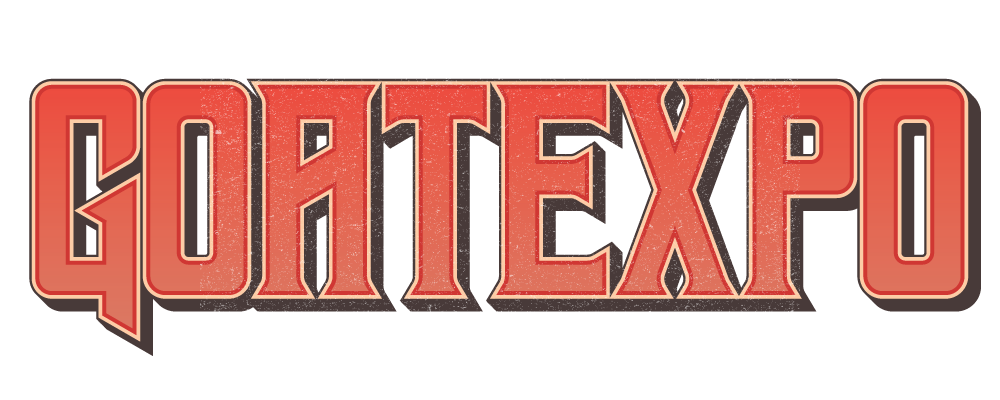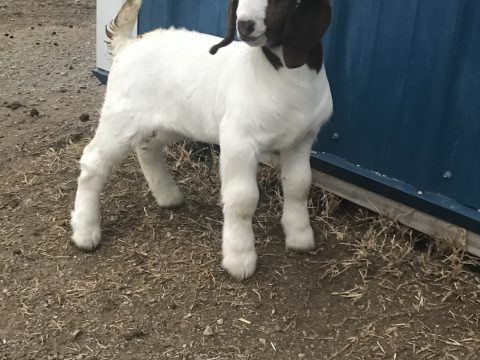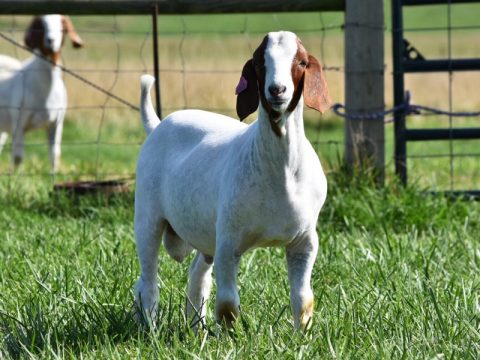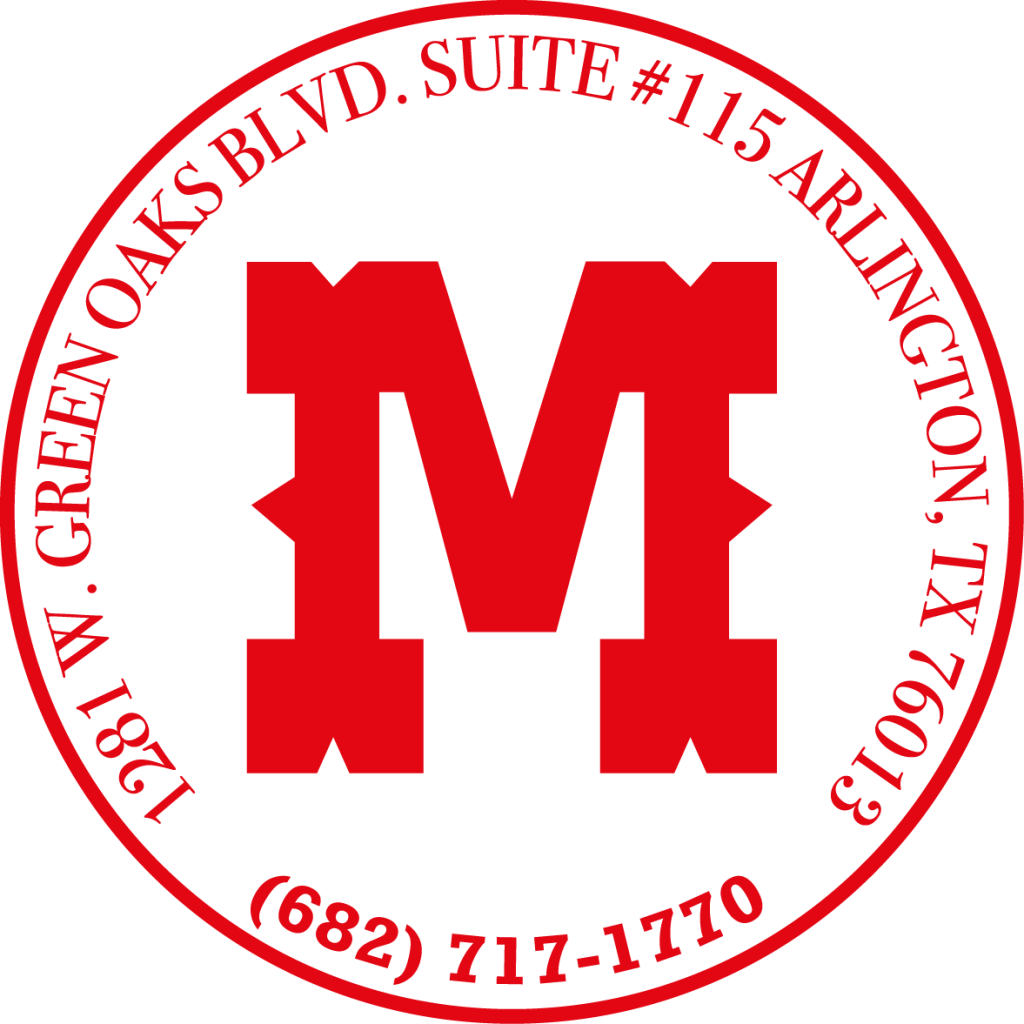
Written by: Dr. Frank Pinkerton
4 part series. First Part
CLICK HERE FOR PDF PRESENTATION
So, You Want To Do Meat Goats?
Introduction
Since the late seventies, I have listened with professional concern, personal interest, and occasional trepidation to owners and prospective owners considered initiating or expanding goat enterprises. Prior to reaching final decisions, some rather skillfully investigated opportunities, constraints, and most probable cost-benefit ratios of various management and marketing alternatives.
Contrarily, others made only cursory investigations of enterprise options, the “fit” of their available resources, market availability/stability, etc. As might be expected, the success rate of such enterprise initiations and expansions was spotty indeed. In some areas, disappointments, if not disasters, considerably exceeded successes. Success rates improved only when bad experience eliminated losers and winners shared good experiences.
Among the most common failings exhibited, the tendency to start too big, or to get too big too fast, was paramount. This tendency was exacerbated when too little technical knowledge was teamed with inflated expectations and (too) short-term financing. A second common failing was to start operations prematurely, i.e., to get the goats on-site before sufficient fencing, facilities, and predator/parasite control programs were in place. Yet a third failing was to realize, belatedly, that slaughter goat prices exhibit marked seasonal highs and lows and, furthermore, that marketing venues, transportation costs, hauling shrinkage, and commission fees were important cost considerations, not mere adjuncts to goat production.
To some, a fourth difficulty was the surprising revelation that their friendly Extension Service person or Veterinarian, who were ever so knowledgeable concerning beef cattle production, pastures, and animal health care, didn’t seem to know shit about goat production. A corollary interpersonal problem sometimes occurred when well-intentioned neighbors with too little goat experience were found, only after the fact, not to know shit, either.
For those currently contemplating the establishment or expansion of a meat goat enterprise, early recognition and detailed investigation of the several different types of operations to choose from would be very useful. Among the alternative types, each of which would require varying levels of financial commitments, physical resources, and site-specific management schemes, are: smallholder/intensively managed herds; larger scale extensively managed herds, small, elite purebred seed-stock herds, specialized herds for the production of Youth Show wethers, and herds held primarily for control of brushy/weedy lands or management of forest under-story vegetation, fire lanes, power lines, and water impoundments. There are also hobby herds for lifestyle enjoyment, and, while raising goat kids along with one’s children may be very satisfying, it may also be rather unprofitable. Only after the final choice among types of enterprise has been made can one logically take further actions, as described below.
Procurement of foundation stock
Rational procurement of initial stock to implement the chosen type of enterprise requires that the owner first select a breed of meat goat and, thereafter, select individual animals within that breed. The breed chosen may be purebreds or crossbred. Readers should recognize that opinions regarding the one “correct” breed of goat for a perceived need vary quite widely. Mathematically speaking, this may be put as: the number of opinions is equal to the number of the discussants (squared) multiplied by the number of breeds known (sort of) to the discussants.
In point of fact, too little reliable data is available to enable analytically precise cost-benefit comparisons between breeds and their various crosses; live with it. On the other hand, modest consideration should probably be given to the relative numbers of certain breeds and their most numerous crosses in the immediate area; they may well be there for practical agronomic or environmental reasons.
Having arbitrarily but realistically guessed at the ‘best-breed’ for the enterprise, owners then must select individuals with attention to sex and age requirements for the initial herd. Selection of individual goats is a rather imprecise undertaking. The basic assumption involved in selection by visual appraisal is that there exists a reasonably close relationship between the physical appearance (phenotypic character) of an animal and it’s actual performance or potential (its’ genotype, as measured by its physiological functions of maintenance, growth, reproduction, lactation, and fattening as expressed in its’ responses to various physical environments).
There is the further assumption that the selector knows these imperfect relationships at least well enough to beat a random gate-cut procedure. Some do, some do not. Thus, inexperienced buyers are strongly urged to arrange assistance in choosing foundation animals; if errors still occur (as they surely will), blame may be conveniently placed.
As I have told many times in many places, evaluating/selecting a ‘desirable’ goat is rather like assessing pornography—it seems fairly easy to do, but it is pure hell to describe. Blemishes, apparent health status, desirable structural traits, size/age ratios, body condition scores, and breed characteristics are easier to evaluate/describe than are body conformation scores and prospective carcass grades. Reproductive efficiency (fertility rate, milk production, mothering ability, longevity) is more difficult to visually assess, while visual evidences of high feed conversion efficiency, daily feed intake, and rate of daily gain are notably absent.
Purchasing foundation meat goats typically involves considerable, perhaps faith-based confidence, in one’s capability to recognize a really good deal. Over the years, I have seen good deals and bad deals and some deals not easily categorized. The confluence of money or easy credit and goat buyer ignorance with goat sellers deeply steeped in the principles of free-enterprise and unfettered by any real notions of observing the Golden Rule, can, and often does, result in painful financial disadvantage to novice buyers.
And, as always, there is lag time between the transaction and the dawning realization (as suspicion turns to certainty) that the deal was nowhere as good as the buyer previously thought. Since most inept buyers are loath to admit to themselves their now documented poor judgment and demonstrated poor bartering skills, their usual reaction is to shift the blame solely onto the seller. In such instances, shrewd sellers may, often with ill-concealed amusement, righteously point out that there really is no such thing as a ‘correct’ price for a goat; caveat emptor, friend.
It follows, then, that the price of a goat in the real world is whatever two parties agree to, then and there; nothing else counts. Those thinking otherwise are both gullible and vulnerable; accordingly, they are near certain to suffer the consequences of their shortcomings—usually sooner than later.
In a rational, economically equitable world, buyers of foundation goats would logically expect to pay prices fairly closely related to prices likely to be received from the sale of subsequent off-spring. Unfortunately, such expectations are too often not realized, largely because inexperienced buyers are no match for experienced sellers possessing a gift for believable hyperbole and minimum conscience.
My own estimate of a fair-price for a non-pregnant, foundation-quality doeling is one that would not exceed by much the current or likely sales value of two 60 lb market wethers (selection grade 1). To illustrate, two such animals selling for $180 ($1.50/lb x 60lb x 2) would be, I suggest, a ‘reasonable’ price for a foundation doeling about ready to breed; as always, there is opportunity to negotiate.
Readers should be keenly aware that such an animal might, in five years or so, have a salvage value of only $60 (120 lb x 50 cents/lb) and thus engender a lifetime depreciation loss of $120 (180 – 60). This $120, plus $72 to cover interest charges ($180 @ 8% x 5 yrs) totals $192 which must be spread over her five year saleable kid crop of, say, eight kids—a rather chilling charge of $24/kid sold.
Assuming this doe’s annual maintenance costs (feed, health, breeding fees, repairs, fuel, etc.) to total $60/annum, brings the annual cost to $84/doe (24+60). If she sold 1.6 kids weighing 60 lbs each (net, after 4% hauling shrinkage) for a $1.50/lb (net, after marketing expenses), her average annual gross would be $144 (96 lbs x 1.50), and her net would be $60 (144 – 84). This sobering, yet realistic net annual earnings figure per doe is certainly reason enough to warn against overpaying for foundation females.
Readers should understand that the cost of a ‘proven’ doe that has weaned one or two sets of kids will usually exceed the price of a doeling by perhaps 50% or more if she is known to be pregnant. Such premiums may/may not be a ‘good buy’; much depends on buyer circumstances and goals.
Similar calculations should be applied to prospective herd sires whose estimated cost-benefit ratio must include charges for depreciation, interest on purchase cost, and annual maintenance. This total, divided by the number of does bred during his tenure, will yield a figure to be included in the annual maintenance charge for each doe. For commercial slaughter kid production, this figure probably should not exceed $3/doe. Contrarily, for those enterprises selling animals at well above slaughter prices (as for breeding stock or Show goat projects), higher prices for bucks may be justified; so also for does, of course.
As a broker and smallholder producer, I sold during 1993/2003 over 2,000 meat goat females as well as small numbers of intact male kids and yearlings. Over 90% of the females sold were doelings, mostly Spanish and Boer/Spanish crosses 4 to 10 months of age. They went mostly to novice buyers or to those wishing to expand.
Be aware that establishing/expanding a commercial herd with doelings can be something of a gamble. Some may prove to be undersized at breeding age (7-10 months); some may be prematurely pregnant; some may have dysfunctional mammary anatomy; some may be late-breeders; some may never breed; those that do breed will almost certainly have a lower incidence of twinning than the typical 15-20% for well-grown, well-fed first-timers kidding at, say, 12-15 months of age.
Given these caveats, I, along with others, priced such goats at variable prices over the going San Angelo, TX auction price for slaughter kids of approximately the same age/weight/condition. At that time, such premiums ranged $8-15/head depending on prevailing price levels, quantity taken, and, of course, my perception of individual buyer’s interest—and gullibility. Insofar as I know, no customer ever came to lasting harm from these transactions; indeed, some became repeat buyers or provided referrals and recommendations. Updated warning: the summers of 2,014 and 2,015, premium-over-slaughter ranged $50-75 or more. Go carefully.
For those contemplating the purchase of purebred foundation females, I strongly suggest you should probably pay no more than the expected downstream selling price of two breeding-quality weaned doelings. To pay more, except in unusual situations, would almost guarantee pain and recrimination.
Contrarily, the economically rational maximum price to be paid for a purebred buck is much more difficult to estimate because of his unpredictable salvage or resale value, but, in any case, the cost-accounting procedure is exactly the same as before (so, too, is the chance for hurt and suffering).
Those contemplating entry into the purebred goat business are urged to proceed very cautiously indeed. Relatively deep pockets are required to get in; an understanding and well-employed spouse may be required to stay in. And, should you buy in at overly inflated prices, divine intervention may well be required for you to ever make a profit—or even to manage an early and only modestly disastrous exit. The purebred meat goat business can be just too thrilling for the inexperienced and unprepared; too, the playing field is nowhere near as level as sellers would have you believe.
Sourcing foundation goats
Having made the required leap of faith to do goats and then having decided the kind of enterprise, it’s initial scale/size, level of investment, breed, purebred-or-grade, and numbers/ages/sexes, it is now time to buy goats (but only if one’s facilities/fences/predator controllers/etc. are actually ready). Note, too, that this is no time for unilateral decision-making; do include your spouse by all means—the average modern marriage is not likely to long survive acrimonious caprine controversy.
Moreover, you should give early notice to your neighbors regarding the imminent arrival of goats at their boundaries, and try to allay their fears of transmissible diseases, fence-crawling, overgrazing, water pollution, excessive noise, exotic odors, and overt sex; doing so may help you avoid abrupt loss of personal reputation and friendship and possibly diminished social standing in the community.
When should you buy goats?
Historically, the supply/availability of desirable goats of various ages, sizes, sexes, and reproductive status varies across years, seasons, and locations. Accordingly, there seems be no economically optimum time to purchase foundation goats (except perhaps during those instances in which environmental conditions in a given area force large-scale selling—and concomitant lower prices for bargain hunters).
On the other hand, individual buyers usually have rather specific needs regarding numbers and ages, as also mating schedules to meet seasonal marketing targets and to accord with site-specific feeding programs, stocking rates, etc. As a consequence, resolution of this recurring supply/demand dilemma is, as earlier described, entirely dependent on two-party price negotiations.
Where should you buy goats?
If possible, you should purchase goats as close to your location as possible. This not only reduces transportation cost and hauling stress, it also lets you take advantage of any earlier environmental acclimation to your area; moreover, it might well be good “p.r.” for both players.
However, if you determine that your precise needs and acceptable prices can not be obtained locally, you have no choice but to look elsewhere. Spanish-type goats and their various crosses are concentrated in the Texas Hill Country (nearly a million head, currently), but there are others, usually in smaller herds, in the southeast and border states. Purebred Boer, Kiko and Savannah goats are now at scattered locations in these same states and, increasingly, in the mid-Atlantic and northeast, as also on the west coast.
There are a number of ways to identify possible sources of foundation stock, among them: industry publications, breed magazines, state and regional Goat Association newsletters, University agricultural extension offices, State Departments of Agriculture, Internet Websites, and, as always, interconnected producer referrals.
Who do you buy goats from?
This is a question even more difficult than: what is an equitable price? Goats may be purchased from public auctions, private auctions, traders/brokers/order buyers, or ranchers and farmers. In my long experience as player/observer, buying directly from goat owners of well-deserved reputation has proven to be the least painful for most purchasers.
Livestock owners in general and many goat owners in particular know from first-hand, sometimes evil experience, that public auctions are places to sell, not to buy. The probability of getting decent quality, healthy goats at such venues is not great, although their prices would likely be comparatively lower than at private treaty sales. Buying through intermediaries (brokers, etc.) can be an uncertain, sometimes painful, exercise, the major difficulties being the source, health, and quality of goats on offer. In any case, you are certain to pay a premium over farm-gate prices; middlemen don’t work free.
My first choice is to go to ranchers from whom I have bought goats previously or, secondly, to go to ranchers of well-known, reputable standing. Normally, I select goats on-site and always from an excess of offerings; that way I can cull those that don’t suit me and, if my selections don’t suit my client, I have only myself to blame (as does my client). For those of you lacking in goat buying experience, I strongly urge you to make use of an advisor or consultant, order-buyer, successful goat producer, whatever.
It is, of course, possible that, as a greenhorn buyer, you could locate a set of good goats at equitable prices; it is not, however, very probable—i.e., the odds are distinctly not in your favor. You simply can not logically expect that most sellers of goats would have your interest foremost in their minds during the negotiations. Goat owners are neither more nor less notable for their charitable treatment of unsuspecting buyers than are any other livestock owners.
Indeed, their tendencies toward eleemosynary endeavors in general may be strongly resisted, except perhaps at Christmas or on the Sabbath. Even then, the IRS is extremely suspicious that reported deductions often exceed actual contributions by an astonishing multiple. So…..cuidado, hombre, y vaya con Dios ….be careful, man, and go with God…..whom you may come to sorely need, as also a sympathetic and patient banker, should you elect to sally forth without benefit of more worldly counsel.
How do you get your new goats home?
Having selected your goats, paid the tab, and had a celebratory handshake, it is now time to load-out. Loading goats, particularly from rather rustic facilities, can be more thrilling than you might suppose; coarse language, agility, and perseverance are usually required in good measure. Contrarily, the hauling of goats is not a particular problem if you have a trailer that will hold convicts or water; do not go forth unprepared.
Summary
This article identifies several concerns and possible actions that merit early and serious consideration by those contemplating establishment, or expansion, of a meat-goat herd. In-depth investigation and comparative evaluation of optional management strategies and tactics would do much to minimize mistakes and lessen the financial pain commonly associated with pore-ass planning and subsequent corrective on-the-job training.
Indeed, failure to make proper assessment of opportunities, constraints, and options will all but ensure that your life with goats will be less than it could be. But, having reached the final decision to do goats, proceed with caution, enthusiasm, and perseverance. If all goes reasonably well, new-found confidence will follow apace; if all does not go as well as expected, new-found education will be your reward. In either case, you can thereafter speak knowingly with the certitude of having-been-there-done-that.
To be continued one week from today, April 12, 2021
CLICK HERE TO WATCH THE YOUTUBE VIDEO. LIKE AND SUBSCRIBE TO THE MIDWEST BUCK SALE YOUTUBE CHANNEL.




























